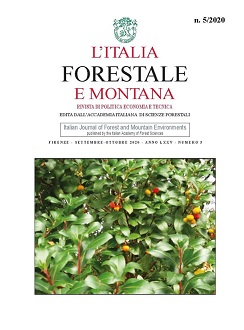Published 2020-12-02
Keywords
- Man and environment,
- agriculture,
- environmental protection,
- Ancient Egypt
Copyright (c) 2020 Italian Journal of Forest and Mountain Environments

This work is licensed under a Creative Commons Attribution-NonCommercial 4.0 International License.
Abstract
At the end of Prehistory, many civilizations were flourishing in south-western Asia, both in Mesopotamia and on the coastline of Sirya, Lebanon and Palestine. These were the empires of the Sumerians, Assyrians and Babylonians, as well as the Hittites and the Phoenician city-states.
The ancient Egyptian civilization was also developing in north-eastern Africa which, like the others specified above, made use of the waters of a river.
This essay examines the agricultural practices carried out by the ancient Egyptians on the banks and delta of the Nile, which annually deposited beneficial layers of silt during flooding.
Egyptian agriculture adequately preserved the natural forest-maquis by reserving it for the harvesting of wood, which was then used for making furniture and sarcophagi, as well as for their building works.
The ancient Egyptians also protected the environment around stands of Papyrus, which was used for making writing materials, in boat building and in the hunting of water birds.
The methods which they used in agricultural practice and environmental protection highlight the advanced nature of their civilization, especially during the New Kingdom era.

